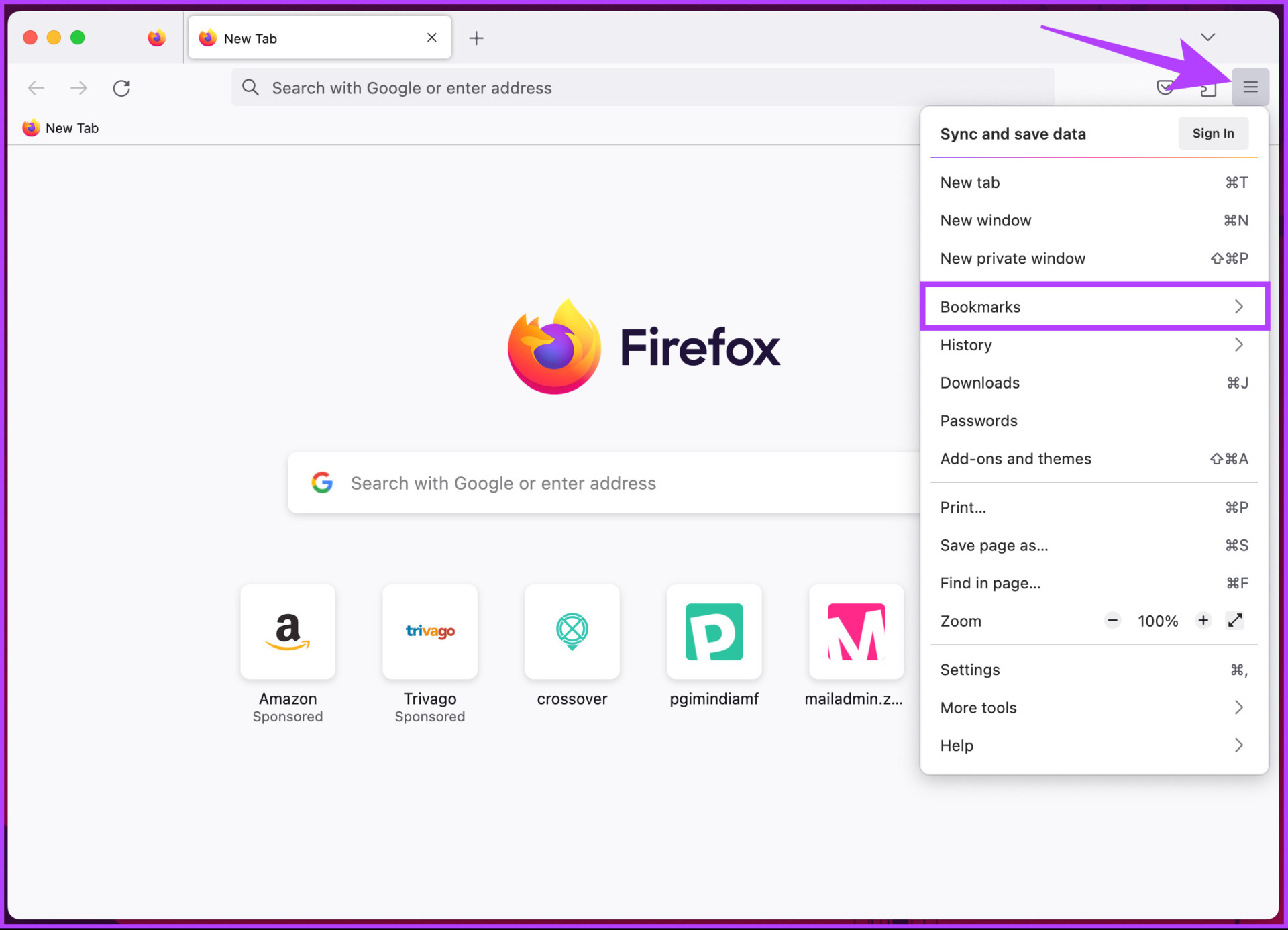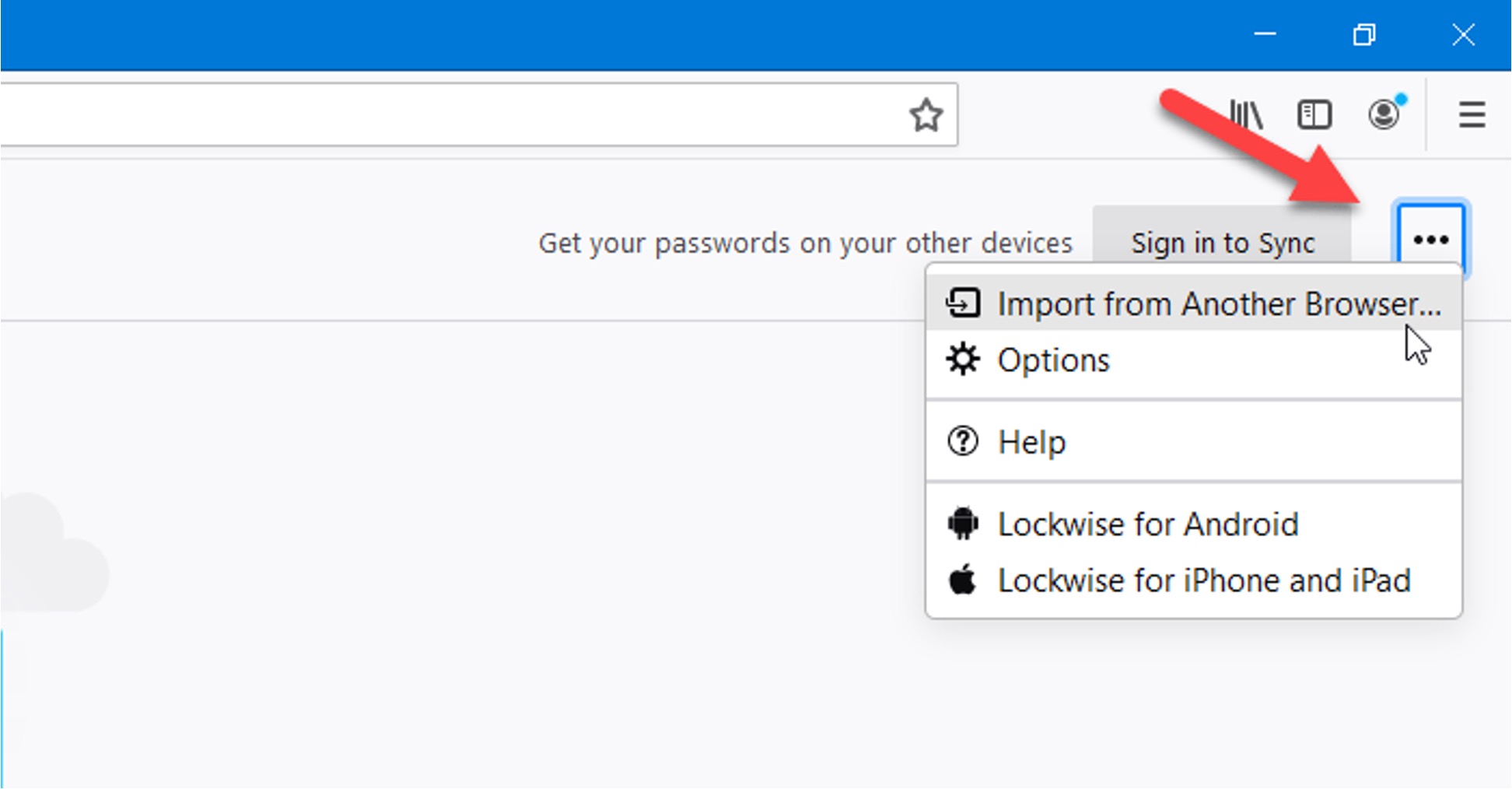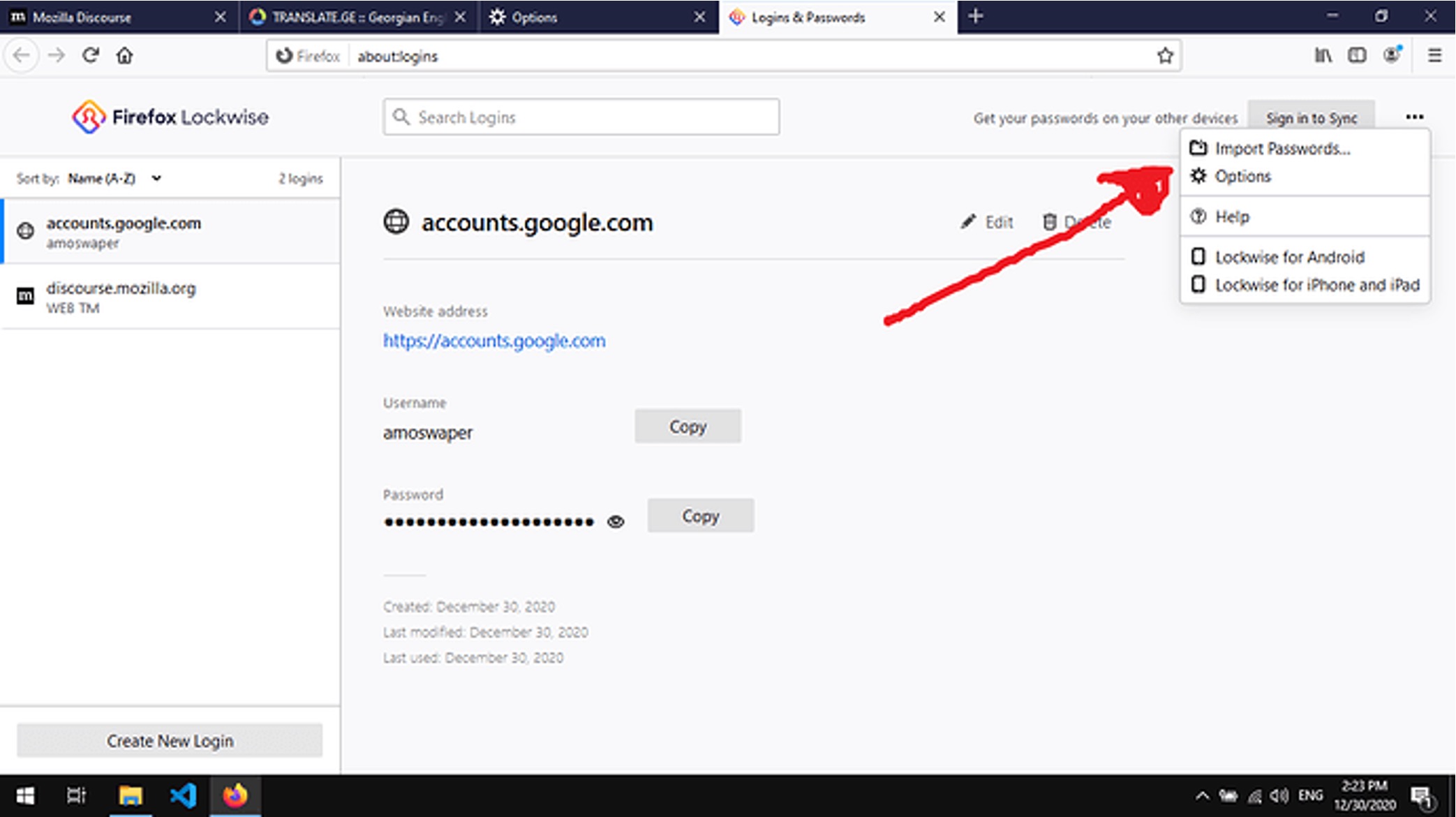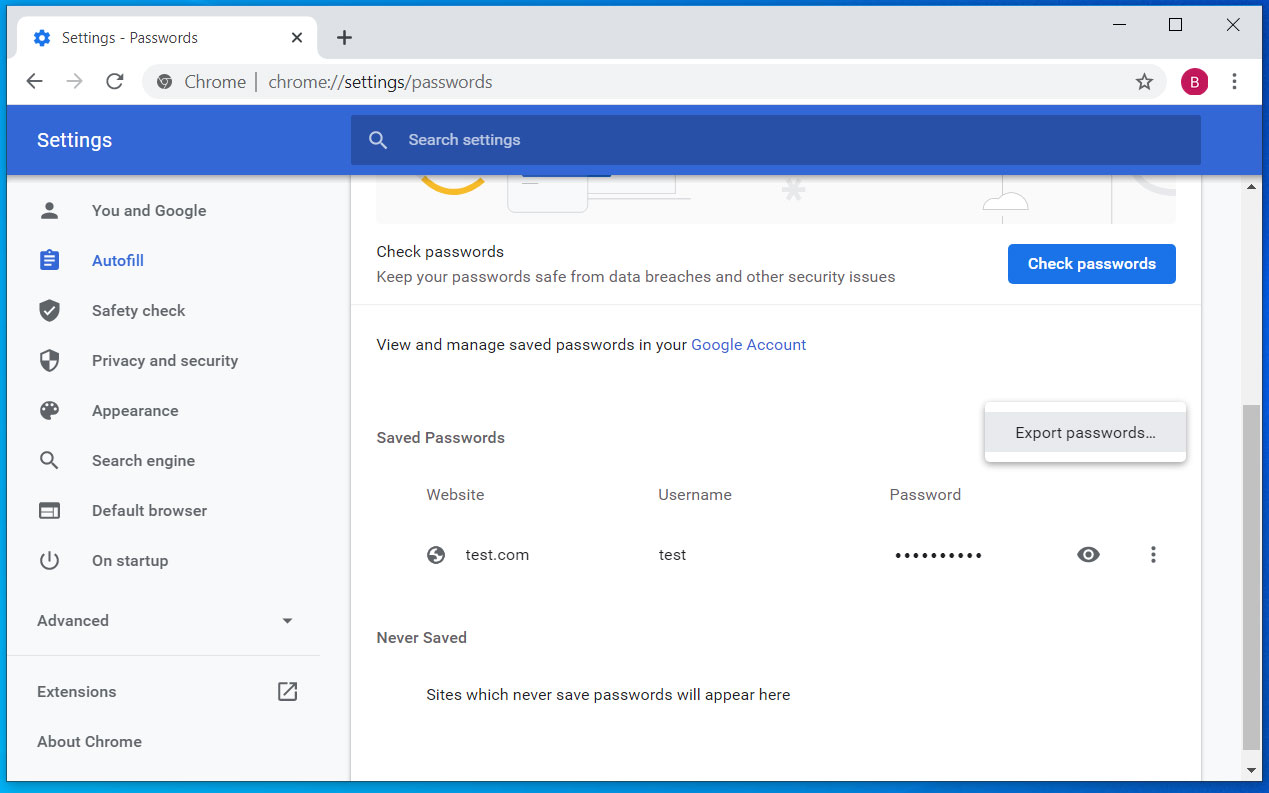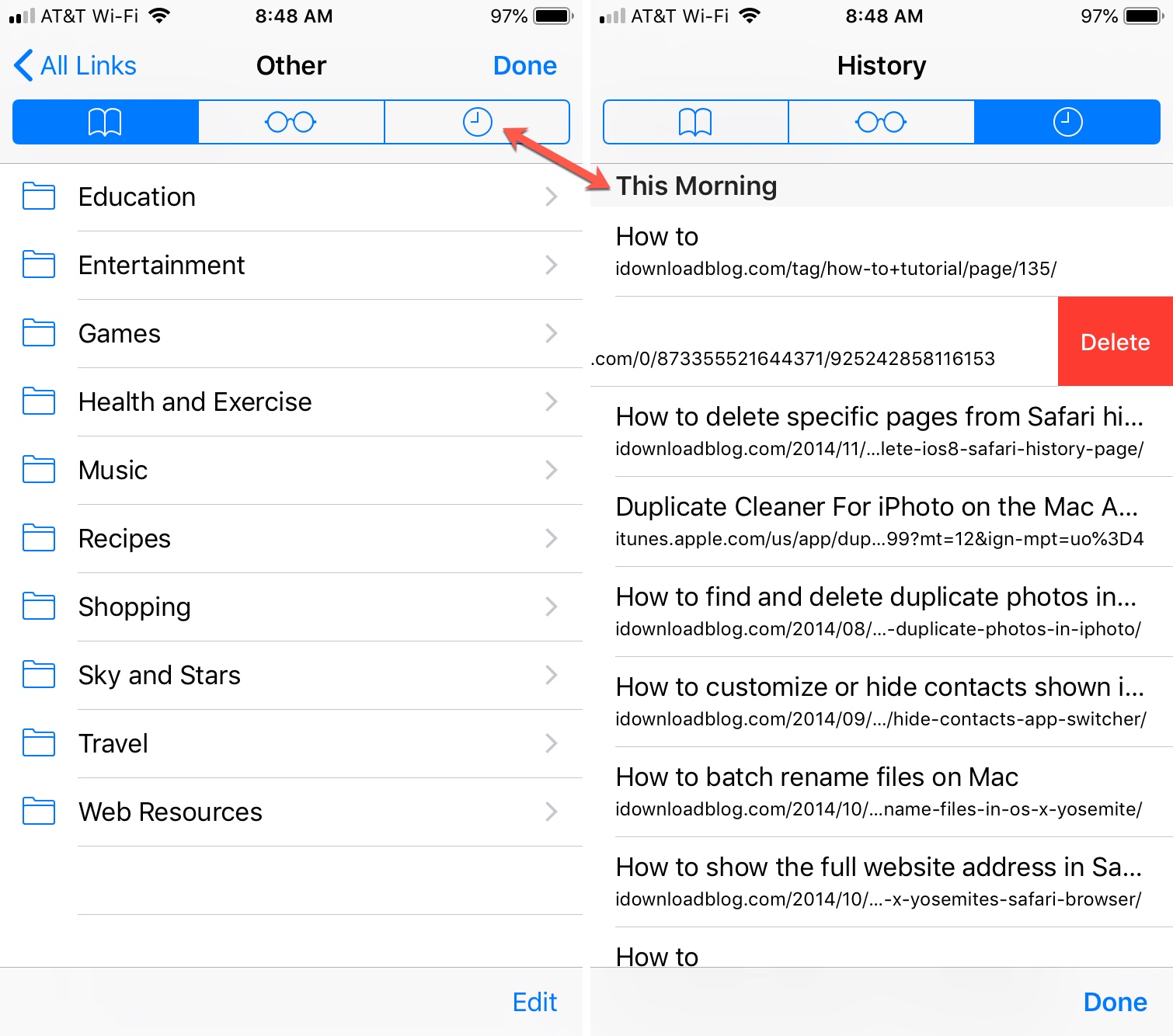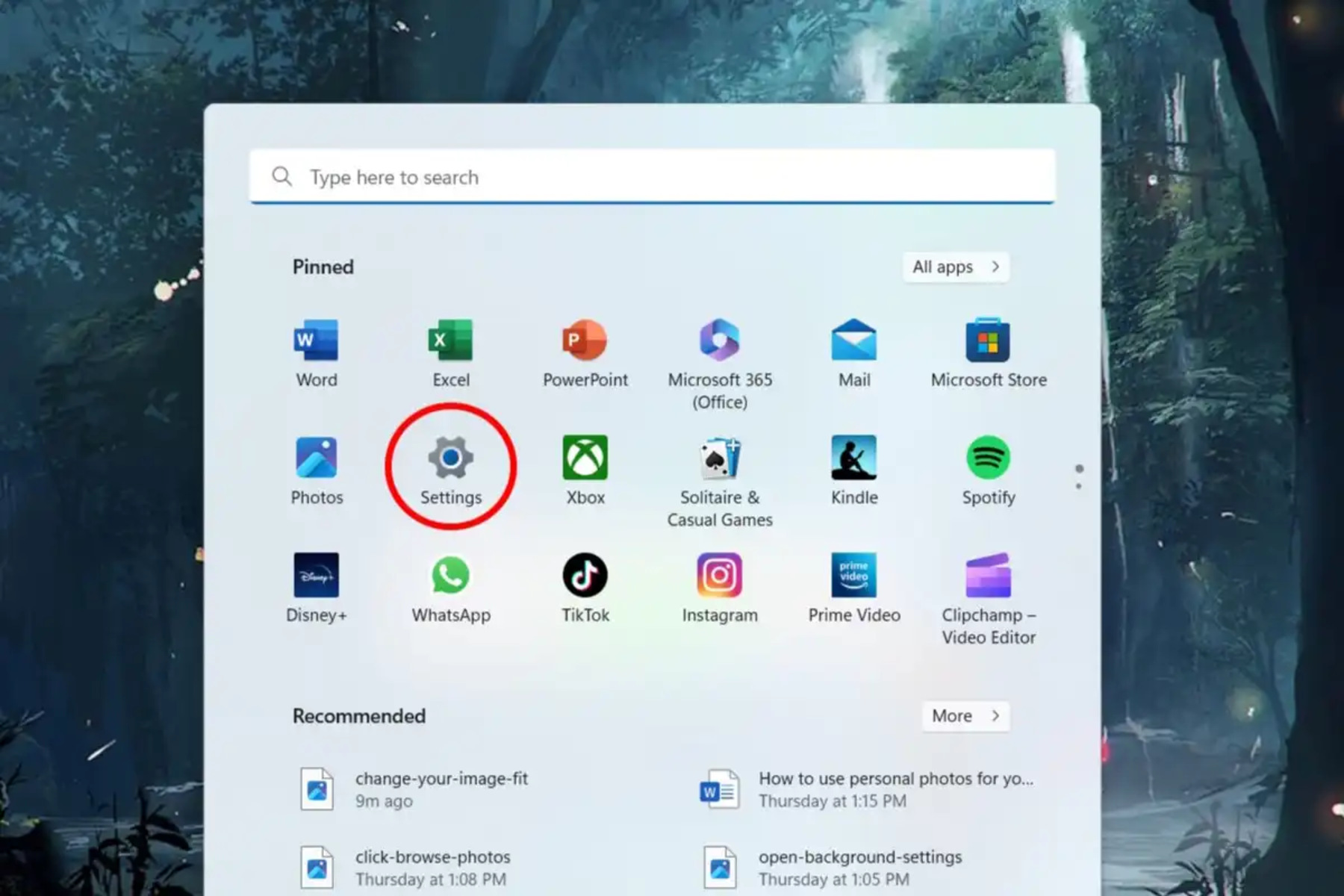Introduction
Migrating from one web browser to another can be a daunting task, especially when it comes to transferring sensitive information such as passwords. However, with the right knowledge and tools, this process can be streamlined and hassle-free. In this guide, we will explore the seamless process of importing Chrome passwords to Firefox, allowing you to transition between these popular browsers without the stress of losing access to your essential login credentials.
By following the steps outlined in this article, you will gain valuable insights into the intricate process of exporting passwords from Chrome and importing them into Firefox. Whether you are making the switch for enhanced security features, improved performance, or simply to explore a new browsing experience, this guide will equip you with the necessary know-how to ensure a smooth transition.
Now, let's delve into the step-by-step process of exporting your Chrome passwords and seamlessly importing them into Firefox. This comprehensive guide will empower you to navigate this transition with confidence and ease, ensuring that your valuable login information remains accessible and secure across browsers. Let's embark on this journey to seamlessly transfer your Chrome passwords to Firefox, enabling you to embrace a new browsing environment without the fear of losing access to your essential accounts.
Step 1: Exporting Chrome Passwords
Exporting your Chrome passwords is the crucial first step in the process of transitioning to Firefox while retaining access to your login credentials. Chrome offers a built-in feature that allows you to export your saved passwords to a file, which can then be imported into Firefox. Here's a detailed guide on how to export your Chrome passwords:
-
Accessing Chrome Password Settings: Begin by opening Google Chrome and navigating to the browser's settings. You can access the settings by clicking on the three-dot menu icon located in the top-right corner of the browser window. From the dropdown menu, select "Settings" to proceed to the next step.
-
Navigating to Passwords: Within the Chrome settings, locate and click on the "Autofill" section. Here, you will find the "Passwords" option, which allows you to manage and view the passwords saved in your Chrome browser.
-
Exporting Passwords: Upon selecting the "Passwords" option, you will be presented with a list of all the saved passwords associated with your Chrome browser. To export these passwords, click on the three-dot menu icon located next to the "Saved Passwords" heading. From the dropdown menu, select "Export passwords" to initiate the export process.
-
Authentication: Chrome will prompt you to authenticate your identity using your computer's login credentials. This is a security measure to ensure that only authorized users can export sensitive password information. Enter your computer's login password or use biometric authentication if enabled.
-
Saving the Export File: After successfully authenticating your identity, Chrome will allow you to choose the location and file name for the exported password file. Select an appropriate location on your computer and provide a descriptive file name that you can easily identify. Once done, click "Save" to export the passwords to the specified location.
-
File Format: Chrome will export the passwords in a CSV (Comma-Separated Values) file format. This file can be easily imported into other password managers or web browsers, including Firefox.
By following these steps, you will successfully export your Chrome passwords to a file, paving the way for the next phase of the process: importing these passwords into Firefox. This seamless transition ensures that your valuable login credentials remain accessible across browsers, allowing you to embrace the enhanced features and security of Firefox without the fear of losing access to your essential accounts.
Step 2: Importing Chrome Passwords to Firefox
Now that you have successfully exported your Chrome passwords to a file, the next crucial step is to import these passwords into Firefox. This seamless process ensures that your valuable login credentials seamlessly transition to the Firefox browser, allowing you to maintain access to your essential accounts without the need to manually re-enter each password. Here's a detailed guide on how to import your Chrome passwords into Firefox:
-
Accessing Firefox Password Manager: Begin by opening the Firefox browser on your computer. Once the browser is open, click on the three-line menu icon located in the top-right corner of the window. From the dropdown menu, select "Logins and Passwords" to access the Firefox Password Manager.
-
Navigating to Import: Within the Firefox Password Manager, locate and click on the "Import" button. This option allows you to import login credentials from an external file, making it the ideal gateway to seamlessly transfer your Chrome passwords into Firefox.
-
Selecting the File: Upon clicking the "Import" button, Firefox will prompt you to select the file containing your exported Chrome passwords. Navigate to the location where you saved the CSV file exported from Chrome, and select it for import.
-
Confirming Import: After selecting the file, Firefox will display a confirmation dialog, indicating the number of passwords found in the imported file. Review this information to ensure that all the relevant passwords are included in the import process.
-
Completing the Import: Once you have confirmed the import details, proceed by clicking the "Import" button within the Firefox Password Manager. Firefox will then initiate the import process, seamlessly transferring your Chrome passwords into its secure password storage system.
-
Verification and Organization: After the import process is complete, take a moment to verify that all your Chrome passwords have been successfully imported into Firefox. Navigate through the list of saved logins within the Firefox Password Manager to ensure that each password has been accurately transferred.
By following these steps, you have successfully imported your Chrome passwords into Firefox, ensuring a seamless transition of your valuable login credentials between these popular web browsers. This streamlined process eliminates the need to manually re-enter each password, saving you time and effort while enabling you to embrace the enhanced features and security of Firefox without compromising access to your essential accounts.
Conclusion
In conclusion, the process of importing Chrome passwords to Firefox is a seamless and essential task for individuals looking to transition between these popular web browsers while retaining access to their valuable login credentials. By following the step-by-step guide outlined in this article, users can confidently navigate this transition without the fear of losing access to their essential accounts.
The journey begins with the crucial step of exporting Chrome passwords, which involves accessing the Chrome settings, navigating to the passwords section, and initiating the export process. By exporting the passwords to a CSV file, users pave the way for the next phase of the process: importing these passwords into Firefox.
The subsequent step involves accessing the Firefox Password Manager, navigating to the import option, and selecting the exported CSV file containing the Chrome passwords. With a simple click, Firefox seamlessly imports these passwords, ensuring that users can effortlessly access their essential accounts within the Firefox browser environment.
This seamless transition between browsers not only saves time and effort but also eliminates the need to manually re-enter each password, providing a hassle-free experience for users making the switch to Firefox. Furthermore, by retaining access to their valuable login credentials, users can explore the enhanced features and security measures offered by Firefox without any disruptions to their online activities.
Importing Chrome passwords to Firefox is a testament to the interoperability and user-centric approach embraced by modern web browsers. It empowers users to make informed choices about their browsing experiences, ensuring that the transition between browsers is smooth, secure, and devoid of any unnecessary complexities.
As technology continues to evolve, the ability to seamlessly transfer essential data, such as passwords, between platforms and applications becomes increasingly important. The process outlined in this guide exemplifies the user-focused approach adopted by leading web browsers, acknowledging the significance of data portability and user convenience.
In essence, the seamless import of Chrome passwords to Firefox underscores the commitment of web browsers to prioritize user experience and data security. By empowering users with the knowledge and tools to effortlessly transition between browsers, this guide contributes to a more user-centric and interconnected digital ecosystem, where individuals can explore new technologies and platforms without the fear of losing access to their essential data.
In conclusion, the process of importing Chrome passwords to Firefox is not just a technical task; it is a testament to the user-centric ethos that drives innovation in the digital landscape. With this guide, users can confidently embrace the transition to Firefox, knowing that their valuable login credentials remain secure and accessible across browsers.







